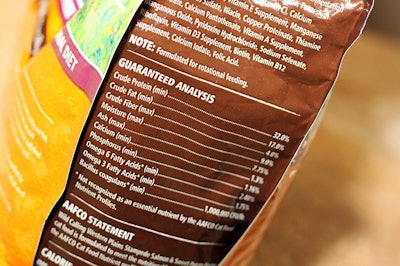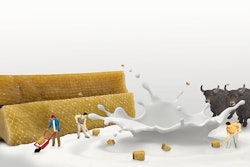
So-called single-use plastics are currently a focus of consumer concerns and news headlines, and most plastic pet food packaging would fall into that category. Granted, much of the buzz is centering on seemingly ubiquitous consumer goods like bottled water or drinking straws, but as the alarms keep sounding, will pet food soon fall under scrutiny, too?
Consumers prefer brands that avoid plastic in packaging
In a March 2019 poll, 80% of U.S. consumers said they have heard at least a little information about bans on single-use plastics, according to Suzanne Shelton, president and CEO of the Shelton Group, an agency focused on sustainability marketing that conducted the poll. Further, 65% of respondents are more concerned about plastics in the ocean than are consumers concerned about climate change (at 58%).
What may be most pertinent to pet food is that 58% of the consumers polled said they have a more positive view of brands using no plastic or limited amounts of plastic in their packaging, Shelton said.
Plastic bags or pouches have become a popular option for packaging of treats and dry pet food due to their ability to protect the product, keep it fresh, offer convenient features like zip-top closures and allow for attractive images and graphics.
“Use of plastic for dry food applications approaches that of paper in terms of value, and will likely overtake paper by value over the next five years because of its increased use for premium and superpremium pet food brands,” wrote Packaged Facts analysts in the executive summary of a 2018 report.
Yet the sustainability factor – or lack thereof – with plastic packaging cannot be ignored as consumers, particularly pet-owning millennials, care more and more about it. Packaged Facts’ consumer surveys show that 30% of U.S. pet owners who buy pet food try to avoid products with excess packaging, though only 18% consider the use of recycled, recyclable or biodegradable materials in pet food packaging important at this point.
Pet food packaging suppliers are researching ways to make their offerings more sustainable; to date, such packaging would either sacrifice important features like product protection or oxidation barriers while also being prohibitively expensive, according to companies like TC Transcontinental, a supplier.
How pet food companies are going green
Despite the difficulties in making plastic packaging more sustainable, some pet food companies are doing their part to reduce single-use plastics, according to Diana Tebaldi, safety and environmental engineer with Mann und Hummel in Germany. During a presentation at Petfood Forum Europe 2019, she pointed to brands such as Wellness and Royal Canin that are partnering with TerraCycle to encourage customers to drop off or send in empty pet food bags, which TerraCycle then recycles or “upcycles.”
Other companies like Dynamite Specialty are introducing new recyclable packaging, while Annamaet uses biodegradable bags and Nestle Purina launches a packaging research institute, after long encouraging its consumers to recycle their wet pet food cans. These are only a few of the pet food players seeking to be more sustainable – because consumers expect it, and today, it’s just good business.

















